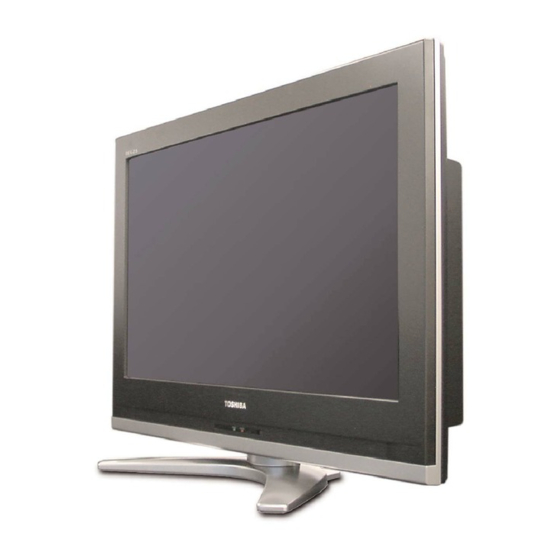
Table of Contents
Advertisement
LCD Color Television
26HL57
32HL57
37HL57
42HL57
For an overview of steps for setting up your new TV, see page 7.
A high definition tuner and programming are required to view High
Definition TV broadcasts. Please contact your cable or satellite
provider.
© 2007 TOSHIBA CORPORATION
All Rights Reserved
Owner's Record
The model number and serial number are on the back of
your TV. Record these numbers in the spaces below.
Refer to these numbers whenever you communicate
with your Toshiba dealer about this TV.
Model number:
Serial number:
VX1A00043600
YC/M
Advertisement
Table of Contents














Need help?
Do you have a question about the 26HL57 and is the answer not in the manual?
Questions and answers